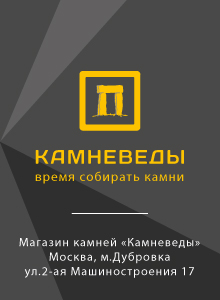Комиссия IMA по новым минералам и названиям минералов: нормы и рекомендации по номенклатуре минералов, 1998 Ряды твёрдых растворов
Solid-solution seriesIn a continuous binary solid-solution series, only the two end-members are regarded as species, and the compositional range of the species is taken to apply from that of the end member to 50 mol% of the series; this is generally known as the “50% rule”. If a binary solid-solution is incomplete, and the composition of one of the end members exceeds 50 mol% by a small amount, then, strictly speaking, that part of the series exceeding the 50% mark could be regarded as a separate species. However, for practical purposes, it may not be desirable to create a new species defining only a very short compositional range, and therefore such cases should be considered on their individual merits.
In multiple solid-solution series, the 50% rule is interpreted to mean predominant occupancy of a
particular structural site. Thus, if there are two types of atom in a structural site, the species is to be defined by the atom comprising at least 50% of that site. If there are more than two substituting atoms in the site, the species is defined by the predominant atom occupying the site. For the purpose of species definition, site vacancies, commonly shown as пустой квадратик in chemical formulae, are to be regarded as atoms.
In minerals with complex structures and a multiplicity of structural sites that can accommodate
a variety of different elements, the 50% rule may be difficult to apply, and authors of new-mineral proposals that rely on this rule for a particular structural site should substantiate their designation by a crystal-structure analysis.
The problem of applying the 50% rule to members of a complex group is exemplified by the amphibole minerals. The example given below shows that the 50% rule should not be applied too rigorously, and that a certain degree of latitude must be permitted when dealing with complex minerals.
Example: With a generalized amphibole composition expressed by the formula AB2C5T8O22(OH)2, the C “site” actually comprises 5 different sites, and the T “site” actually comprises 8 sites. With the C sites able to accommodate Mg, Fe2+, Mn2+, Li, and a number of less common elements, there is a great opportunity for the proliferation of mineral species if the 50% rule for each structural site were strictly adhered to. Added to this is the difficulty of accurately determining site-populations for elements with similar scattering powers. The Amphibole Subcommittee therefore decided to regard the different C sites as one composite site, and to apply the 50% rule to it. The T sites, normally occupied by Si and Al, presented a different problem, as petrologists had long regarded the partial replacement of Si by Al as being of petrological significance. The 8 T sites were therefore not considered as one composite site, and smaller increments in the Si:Al ratio were taken as the effective boundaries between species.
In some cases, solid-solution series do not extend to either end member, but instead, the compositions cluster around the 50% mark. For practical reasons, it may not be appropriate to denote the compositions on the two sides of the 50% mark as separate species. Such cases should be considered on their own merits.
Example: In pentlandite, (Fe,Ni)9S8, Fe and Ni substitute for each other to a limited extent, with compositions centered around Fe4.5Ni4.5S8. It has not been found necessary to divide pentlandite into two species, an Fe-dominant one and a Ni-dominant one.
Some additional details applying to multiple and partial solid-solution series are given in Nickel (1992).
источник
|
info@kristallov.net Правила копирования и цитирования материалов с сайта Кристаллов.Net |
| Карта сайта |
|
© Кристаллов.net | Kristallov.net Copyright 2010-2017 Систематика и классификация минералов, горных пород, метеоритов, окаменелостей |

